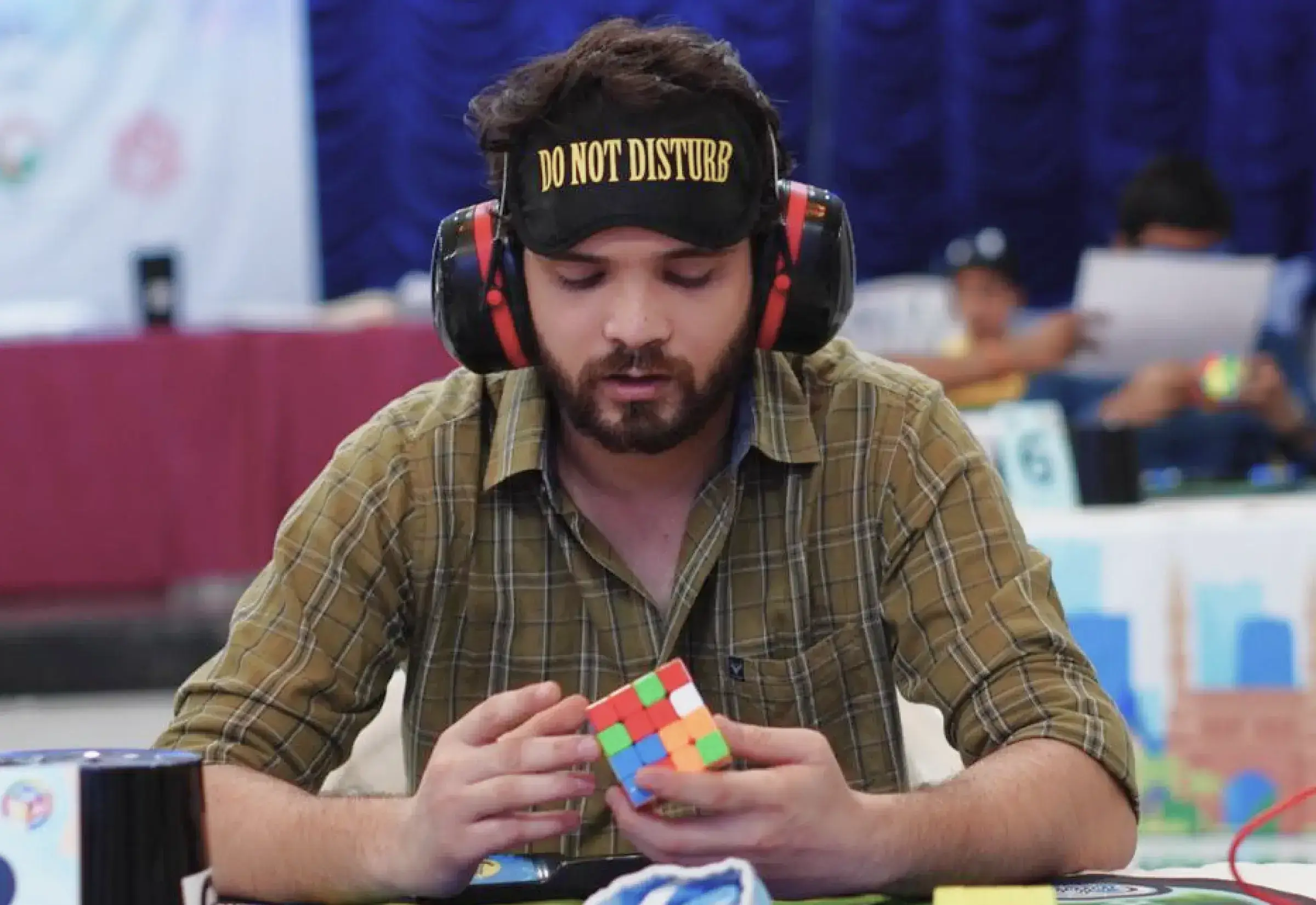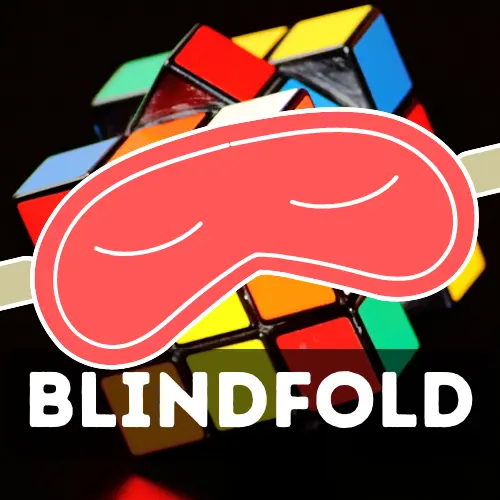7 Different Types of Rubik's Cubes and Their Unique Features
Imagine picking up a Rubik’s Cube for the first time - its six colorful sides seem simple, but a few twists reveal a complex puzzle. Returning it to its original state becomes a challenge that turns into an adventure. The Rubik’s Cube is more than just a toy; it tests your brain, creativity, and problem-solving skills. For some, solving it becomes a mark of achievement. But before you dive in, let's explore the world of Rubik's Cubes. How many types of rubiks cube exist, and which should you try first? Let's unravel the secrets behind this iconic puzzle.
7 Different Types of Rubik's Cube That You Should Know
1. The Classic 3x3 Rubik's Cube
2. The 2x2 Pocket Cube
3. The 4x4 Rubik's Revenge
4. The 5x5 Professor's Cube
5. The Pyraminx
6. The Megaminx
7. The Mirror Cube
Let's explore all types of rubik's cube in detail.
1. The Classic 3x3 Rubik's Cube
Let’s start with the classic the '3x3 Rubik's Cube'. This is where it all began, a design born from the mind of Ernő Rubik, a Hungarian architect, in 1974. With its six faces and nine squares per face, it may look simple, but solving it demands a delicate dance of logic and strategy. The 3x3 has become synonymous with the term “Rubik's Cube” itself.
Why It’s So Popular
The 3x3 is not just a puzzle; it’s a cultural phenomenon. Countless books, competitions, and even academic studies revolve around it, making it the go-to version for newcomers and experienced cubers alike. It’s also the official cube of the World Cube Association (WCA) competitions!
Benefits of Playing the 3x3 Rubik’s Cube
- Problem-Solving Skills: You’ll find yourself recognizing patterns and planning moves ahead.
- Memory Enhancement: Memorizing various move sequences (algorithms) is a workout for your brain!
- Focus and Patience: It’s a lesson in perseverance as you strive to avoid frustration.
The Challenge
While the 3x3 may be inviting, the memorization of algorithms can be overwhelming for beginners. And if you’re looking to join the ranks of speedcubers, prepare for some serious hand-eye coordination training!
Perfect for - Beginners
Absolutely! The 3x3 is a fantastic starting point. With a wealth of tutorials available, it serves as the gateway to mastering more advanced puzzles.
2. The 2x2 Pocket Cube
Next, we have the 2x2 Pocket Cube, a delightful little sibling to the 3x3. This compact puzzle is perfect for younger players or those just starting their cubing journey.
Why It’s a Hit
Its smaller size makes it easier to manipulate and a favorite among beginners and speedcubers alike, who can aim to solve it in mere seconds!
Benefits of Playing the 2x2 Rubik’s Cube
- Great for Beginners: It introduces cube movement without overwhelming complexity.
- Finger Dexterity: The smaller size helps build muscle memory, improving your speed over time.
The Challenge
Don’t let its simplicity fool you! The 2x2 still requires knowledge of algorithms, especially if you aim to speed through it. To make it easy, read how to solve a 2x2 Rubik’s Cube like a pro.
Best for - Beginners
Absolutely! The 2x2 is the ideal introduction to the world of cubing, laying the groundwork for more challenging puzzles.
3. The 4x4 Rubik's Revenge
Feeling adventurous? Meet the 4x4 Rubik's Revenge, also known as the "Master Cube." This puzzle introduces new challenges with additional layers, perfect for those who have conquered the 3x3.
Popularity Among Users
Intermediate and advanced cubers revel in the 4x4’s complexity without being as daunting as larger cubes.
Benefits of the 4x4
- Spatial Reasoning: The added pieces improve your planning skills and spatial awareness.
- Advanced Techniques: It’s a chance to delve into more complex algorithms, advancing your cubing skills.
The Challenge
Be prepared for parity errors—unique to the 4x4—that require special algorithms to resolve.
Is It Right for You?
If you’re ready to graduate from the 3x3, the 4x4 is an exciting next step that offers a rewarding challenge!
4. The 5x5 Professor's Cube
For those looking to push their limits further, the 5x5 Professor's Cube takes the challenge to a whole new level. With its additional complexity, it’s perfect for experienced cubers seeking a rigorous test.
Why It’s a Favorite
The 5x5 is a beloved choice among advanced cubers but is less frequently used in competitions due to the time it demands.
Benefits of the 5x5
- Deep Problem-Solving: More pieces mean more intricate algorithms to master.
- Perseverance Building: Solving the 5x5 takes time, teaching you patience.
The Challenge
With advanced parity errors and a higher complexity, it’s best suited for those who have already mastered smaller cubes.
Best for - Experts
Yes, the 5x5 is crafted for experts eager to explore advanced techniques and challenge their understanding of cube mechanics.
5. The Pyraminx
Let’s shift gears to the Pyraminx, a twisty puzzle that breaks the mold with its pyramid shape and triangular faces. It’s a refreshing change for those seeking a new puzzle-solving experience.
Popularity Among Users
The Pyraminx is well-loved for its unique shape and accessibility, making it a favorite among casual players and novices.
Benefits of the Pyraminx
- Unique Challenge: It introduces new solving techniques beyond the traditional cubic puzzles.
- Easy to Learn: Its straightforward mechanics make it perfect for beginners.
The Challenge
While fun, the Pyraminx might feel too simple for advanced cubers, who could solve it in seconds.
Ideal for - Beginners
Absolutely! The Pyraminx is an excellent entry point into the world of twisty puzzles, combining fun with straightforward mechanics.
6. The Megaminx
Now, let’s meet the Megaminx, a dodecahedron-shaped puzzle with 12 faces, offering a twisty challenge that’s reminiscent of the 3x3 but with extra complexity.
Popularity Among Users
Intermediate and advanced cubers gravitate toward the Megaminx for its unique shape and intricate layers.
Benefits of the Megaminx
- Enhanced Problem-Solving: More faces equal more pieces to manage, increasing the challenge.
- Fun and Rewarding: For those who thrive on solving complex puzzles, the Megaminx is incredibly satisfying.
The Challenge
Solving the Megaminx can be time-consuming, requiring a good grasp of advanced techniques.
Best for - Advanced Cubers
Yes! The Megaminx is tailored for those ready to elevate their cubing skills with a complex challenge.
7. The Mirror Cube
Finally, let’s take a look at the Mirror Cube, where the pieces vary in size rather than color, turning the solving process into a unique visual challenge.
Popularity Among Users
Cubers drawn to a visual puzzle appreciate the Mirror Cube for its irregular shapes and spatial awareness demands.
Benefits of the Mirror Cube
- Spatial Reasoning: Recognizing shapes instead of colors enhances your spatial intelligence.
- Visually Engaging: The mirrored surfaces add to the visual appeal, making it a delightful puzzle to engage with.
The Challenge
The shape-shifting nature of the Mirror Cube can make it tricky to recognize patterns, adding an extra layer of difficulty.
Beyond the Basics: Larger Cubes and Collector’s Editions
For those ready to take the plunge into larger cubes, such as the 6x6 and 7x7, the solving method generally follows the same reduction principles as the 3x3, but be prepared for additional parity errors and more complex algorithms.
And for collectors, Collector’s Edition Rubik’s Cubes come in various artistic designs, from elegant metallic finishes to unique shapes like the Ghost Cube. While they maintain the solving principles of traditional cubes, they add a delightful twist to your collection!
So, what’s next on your journey with the Rubik’s Cube?
As you can see, the Rubik’s Cube offers a treasure trove of benefits for cubers of all ages. It sharpens your spatial awareness, enhances problem-solving skills, and cultivates patience and perseverance. Whether you're a curious beginner or a seasoned expert, each twist and turn of the cube presents an opportunity for growth and self-discovery.
Start Learning
‘Who learns to solve Rubik’s cube?’ - many of you may ask. Mostly people learn to solve the cube from their peers. But if you really want to experience the possibilities in its full spectrum, it is always better to get trained. Connect with experts who have tried and mastered a maximum number of algorithms. If you want to learn how to solve the different types of Rubik’s cube put together in a personalized lesson plan by expert cubers, explore Rubik’s cube classes online.
Finding Your Community
One of the most rewarding aspects of cubing is the vibrant community that surrounds it. From local clubs to online forums, there are countless spaces where you can connect with fellow enthusiasts. Here, you can share your experiences, learn new techniques, and even participate in friendly competitions. Who knows? You might just find a mentor or a cubing buddy who can inspire you to take your skills to the next level.
Joining Competitions
If you're looking to challenge yourself further, consider participating in a Rubik's Cube competition! These events not only test your speed and skill but also provide a fantastic opportunity to meet other cubers and witness some mind-boggling solves. Competitions are held at various levels, from local gatherings to international championships, making it easy to find one that fits your skill level and location.
Exploring Advanced Techniques
As you grow more comfortable with solving cubes, you’ll want to explore advanced techniques that can elevate your solving game. Methods such as CFOP (Cross, F2L, OLL, PLL), Roux, or ZZ are popular among speedcubers and can significantly reduce your solving times. YouTube is filled with tutorials, and many websites offer comprehensive guides and algorithms to help you master these techniques.
Setting Personal Challenges
Nothing is more rewarding than setting personal challenges and achieving them. Whether it’s learning a new solving method, aiming for a specific time on the 3x3, or even venturing into more complex puzzles like the 7x7, these goals can keep your cubing journey exciting and fresh.
Creating Your Own Algorithms
As you become more skilled, consider creating your own algorithms! This helps reinforce your understanding of the cube and fosters creativity. Document your journey and share your findings with the community; you may inspire others to do the same.
Summarizing - The Types of Rubik’s Cube
In a world where instant gratification often reigns, the Rubik’s Cube teaches us patience and the value of practice. Every twist brings you closer to mastery, and every failure is a step toward success. As you dive deeper into the world of cubing, remember that it’s not just about the end goal of solving the cube; it’s about enjoying the process, embracing the challenges, and celebrating the small victories along the way.
So go ahead, scramble that cube one more time. Take a deep breath, trust your instincts, and let the colors guide you on this exhilarating journey. Each solve is a story, and you are the author of your own cubing adventure. Happy cubing!














